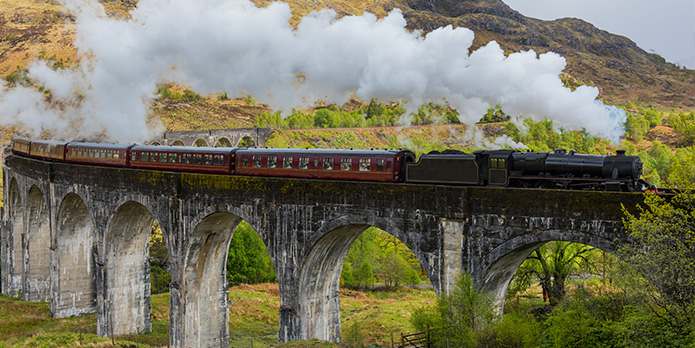
Delivering the rolling stock experience customers expect
Few elements of passenger rail provokes emotion in the way that rolling stock can. For enthusiasts, the sight of a brand new vehicle entering service for the first time is a source of great excitement (or sometimes disappointment). For customers, the quality of the trains they use every day is instrumental to their satisfaction with the overall service.
Rail travel is so often a sensory experience. Whether it be the nostalgic whistle of a steam engine, the piquant smell of diesel, the smoothness and stability of the ride, or the scent of fresh coffee, operators consistently play to customers’ senses when promoting their service and their brand. And so much of this centres on interactions with the vehicle itself. This is all part of the rich narrative of rail travel: the evocative history wrapped up in Brief Encounter, the Road to the Isles, or the Orient Express.
But while operators have always, and will forever, play upon such connotations, the ability of the industry to deliver in kind is mixed.
Post-privatisation, successive governments played it safe on stock, too often reluctant to invest in new products, particularly for passenger franchises outside London and the south east. It tended to be left to the market to decide on how stock should be procured and specified.
For the passengers on more subsidy-hungry franchises and those with less natural profit-making potential, the logic of the market has led to poor outcomes: second hand stock cascaded out from London and an inability to justify the replacement of vehicles unfit for a modern travel experience.
Thankfully change is afoot.
Rolling stock of the future
Stimulated by a more investment-focused strategy set down by the government, there is a growing consensus about what new passenger rolling stock should look like.
Given the scale of electrification due for CP5 and expected to carry on into CP6, procuring high quality electric stock will continue to be a theme. But manufacturers producing bi-mode vehicles will become increasingly relevant as the current electrification programme will omit large sections of the network. Even by 2045, 5-10% of the national fleet will need to run on non-electrified track. Diesel stock will still be needed.
Reflecting franchises’ recalibration towards the needs and expectations of the modern customer, stock will have to be extremely passenger-friendly, with excellent accessibility, high standards of comfort and cleanliness and an appropriate balance of space for seating and standing.
Stock will therefore benefit from flexibility: the extent to which it can be re-purposed for different types of service. Indeed, in a macro economic climate of belt-tightening, any new money will be expected to work as hard as possible so the more ‘lives’ that can be wrung out of each vehicle, the better.
Certainly, all new stock has to be WiFi enabled and provide operators with opportunities to enhance their offering through digitisation, for example in passenger loading.
The Digital Railway agenda makes likely an expectation that all new trains will include ETCS as standard. There are signs, too, that the government will increasingly be requiring a more ‘standard’ product. This has interesting implications for how any individual manufacturer differentiates itself from its competitors. Examples may include common systems for coupling and standard door positioning.
Procurement and financing
Traditionally, rolling stock in the UK has been procured by Rolling Stock Operating Companies on an asset finance basis where the financier bears the risk that the train may not be re-leased after its initial contract with an operator expires.
However, this model is diversifying with more project finance, where a special purpose company borrows money to buy the stock, which is then leased to an operator. This has piqued the interest of non-traditional investors, including infrastructure investment funds. One recent example is the deal struck between Rock Rail (Rock Infrastructure) and Abellio to provide Stadler units for the new East Anglia franchise.
With the trend towards devolution and sub-national transport bodies, we will also see changes in who specifies and procures stock. Rail North, at the vanguard of this new dynamic, partnered with the DfT to define what kind of stock First Group and Arriva should use for the new north of England franchises. For manufacturers, developing strong and effective relationships with devolved bodies, as well as the Department, will be essential to ensure they stay on top of what decision makers – and those local authorities and metro regions they represent – expect.
Competition
While privatisation has not always created the best outcomes, market liberalisation has made the UK a highly attractive place for manufacturers to do business. The system is not rigged to favour one ‘national’ provider. We have five or six established manufacturers all vying to secure varied opportunities, from light rail to very high speed. New entrants are also coming onto the scene.
All this bodes well. With a pro-growth government, new financing and procurement models, and a closer consideration of customer needs, effective market competition can bring advances in innovation, value for money – and the passenger experience.
Ben Blackburn is a Senior Account Manager at Freshwater UK, a full service communications consultancy with a team of rail sector specialists operating across the UK.
